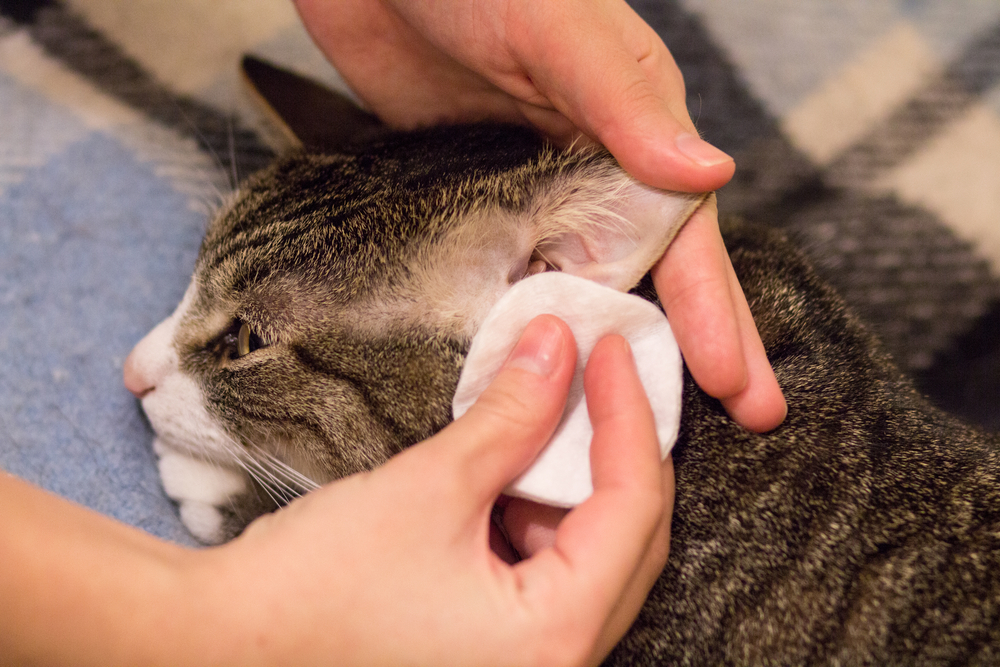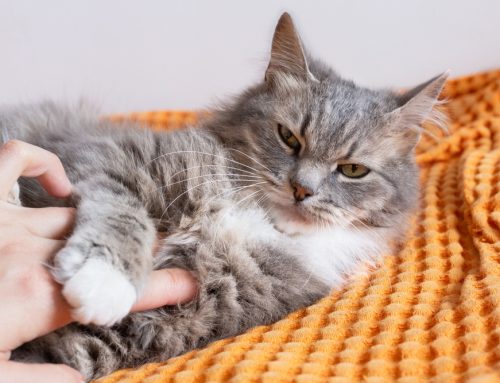Routine ear cleaning is necessary for many pets to remove excess wax and debris and prevent painful infections. You can perform this task at home when your pet’s ears are healthy. Our Countryside Veterinary Hospital team explains what you need to know about pet ear care.
Pet ear infections
Ear infections commonly affect many pets, causing significant pain and potentially leading to more serious consequences such as hearing loss and neurological signs. Pets are prone to ear infections because their ear canal is shaped like an L, as opposed to a human’s straight ear canal. This shape promotes the accumulation of wax, skin oil, and other debris that bacteria and yeast can feed on, allowing the pathogens to proliferate. In addition, some pets are at higher risk for ear infections, including those who have:
- Allergies — Pets affected by environmental or food allergies have a defective skin barrier, which can lead to increased ear wax production and resultant ear infections.
- Narrowed ears — Pets, such as Shar-peis, who have narrow ear canals are at increased risk for ear infection because the structure hinders effective drainage.
- Hairy ears — Pets, such as poodles and cocker spaniels, who have excessive hair in their ear canals are at increased ear infection risk because wax and other debris accumulate in the hair, attracting pathogens.
- Long, droopy ears — Pets, such as basset hounds and cocker spaniels, who have long, droopy ears often get ear infections because their ear structure hinders drainage and drying.
- Water-loving pets — Pets, such as Labrador and golden retrievers, who love to swim are prone to ear infections because trapped moisture can promote bacterial and yeast growth and proliferation.
Pet ear infection signs
Ear infections tend to cause pets significant pain, and signs may include head shaking, scratching at the affected ear, whining, yelping when the ear is touched, and ear drainage and odor. In chronic cases, the ear canal tissue can thicken and scar and potentially involve the middle ear, leading to neurological signs such as head tilt, lack of coordination, and facial nerve paralysis.
Pet ear cleaning guide

Not all pets need routine ear cleaning. For example, most cats keep their ears healthy and clean, and typically only need routine ear cleaning if they have allergies or other conditions that put them at higher risk for infections. Ask our Countryside Veterinary Hospital team how often you should clean your pet’s ears. When you are ready to tackle this task, follow this comprehensive guide:
- Gather your supplies — Before corralling your pet, gather all the necessary supplies, including a veterinary-approved ear cleaning solution, cotton balls or gauze pads, towels, and treats.
- Use an appropriate ear cleaning solution — Select a veterinary-approved ear cleaning solution specifically formulated for pets. Avoid using water, hydrogen peroxide, alcohol, or homemade solutions, which can irritate the delicate ear canal’s natural balance.
- Inspect your pet’s ears — Before cleaning your pet’s ears, inspect them for redness, swelling, discharge, or foul odor, which can indicate an infection or other health concern. If you notice an abnormality, consult our veterinary team before proceeding because cleaning an infected ear can cause damage.
- Clean the outer ear — Use a damp cotton ball or gauze pad to gently remove visible dirt and debris. Avoid inserting anything into the ear canal since this can push debris into it.
- Administer the ear cleaning solution — Gently lift your pet’s ear flap and fill the ear canal with the solution. Massage the ear base for 20 to 30 seconds to distribute the solution and loosen any wax and debris.
- Allow your pet to shake — Take cover, and let your pet shake their head to dislodge wax and debris from the ear canal.
- Clean up — Use a clean cotton ball or gauze pad to gently wipe away excess ear cleaning solution, wax, and debris from your pet’s ear. Never use cotton swabs for this step since they can damage your pet’s ear drum.
- Reward your pet — Reward your pet after cleaning their ears to create a positive association with the procedure.
Cleaning your pet’s ears regularly can help prevent painful ear infections and associated complications. If you have concerns about your pet’s ears or would like an ear cleaning demonstration, contact our Countryside Veterinary Hospital team.








Leave A Comment